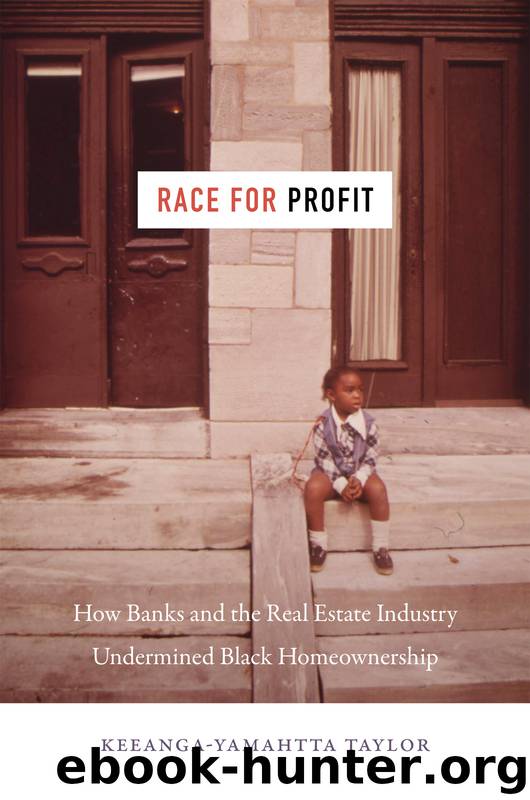Race for Profit by Keeanga-Yamahtta Taylor

Author:Keeanga-Yamahtta Taylor
Language: eng
Format: epub
Publisher: The University of North Carolina Press
Published: 2019-01-15T00:00:00+00:00
THE MILWAUKEE WAY
While HUD-FHA offices in Detroit were being applauded for their heavy use of low-income homeownership programs, Lawrence Katz, who had directed the FHA in Milwaukee, Wisconsin, for nine years, was fired because of his jurisdiction’s comparatively slow placement of poor people into FHA-insured homes. Katz said he had predicted the collapse of HUD’s low-income homeownership program as early as 1968—as soon as it began. He said, “You are going to have problems. It had to happen. We discussed at a national meeting … that no matter how good the condition of a house is when it is bought by a welfare mother, if a repair program is not included, with money coming from the outside, it won’t work.”67 Proponents of the program celebrated Katz because he crafted an approach that appeared to be successful. But he did so in overbearing ways that infringed on the freedom of the Black women who were in the program. Perhaps as importantly, for all of the applause that Katz would garner, his resource-laden imprint on homeownership for the poor in Milwaukee also worked to preserve housing segregation instead of challenging it. While it was a short-term solution, strengthening the ghetto would ultimately undermine the housing choices of poor and working-class Black women.
But early on, before his dismissal from HUD in 1971, Katz had led the Wisconsin FHA office beginning in 1962, and in that time, he eventually made the state, especially Milwaukee, a national model for how to tame the problems plaguing the existing housing market. Katz’s slow and patient approach had driven the speculators out of the market while atypical collaborations with the state welfare agency had allowed Wisconsin to have the most unique, successful, and underutilized approach to using the Section 235 subsidy in the country—if only on a small scale. Katz began by recognizing the obvious: poor people purchasing homes in a distressed housing market would need additional funds to pay for repairs. Katz was willing to admit and act on the fact that there was no other way that women on very fixed incomes would be able to afford the maintenance necessary to keep up an old house. Indeed, the age of the housing available to African Americans in Milwaukee ranged from forty to seventy years.68
HUD-FHA met with officials at the Wisconsin welfare department to inquire into the possibility that the federal agency would guarantee the financial stability of buyers who might have to meet unexpected maintenance expenses. Of thirteen Wisconsin counties, nine agreed to contribute funds to offset the cost of repairs in the homes of AFDC mothers using a homeownership subsidy, earmarking at least $500 per AFDC family as additional annual monies.69 In Michigan, AFDC mothers received only $5 a month to cover home repairs.70 The key in Milwaukee, according to Katz, was the assumption that the inner city did not have “prudent buyers.”71 The urban housing market reversed what Katz described as the FHA’s “historical assumption” that the “value and price of a home is determined when a prudent buyer and a knowledgeable seller is [sic] present in the inner city.
Download
This site does not store any files on its server. We only index and link to content provided by other sites. Please contact the content providers to delete copyright contents if any and email us, we'll remove relevant links or contents immediately.
Becoming by Michelle Obama(9755)
The Last Black Unicorn by Tiffany Haddish(5414)
Beartown by Fredrik Backman(5357)
Man's Search for Meaning by Viktor Frankl(4275)
The Book of Joy by Dalai Lama(3698)
In a Sunburned Country by Bill Bryson(3368)
The Five People You Meet in Heaven by Mitch Albom(3335)
Full Circle by Michael Palin(3268)
The Choice by Edith Eva Eger(3214)
The Mamba Mentality by Kobe Bryant(3095)
The Social Psychology of Inequality by Unknown(2766)
Book of Life by Deborah Harkness(2719)
Imagine Me by Tahereh Mafi(2688)
The Checklist Manifesto by Atul Gawande(2657)
Less by Andrew Sean Greer(2568)
A Burst of Light by Audre Lorde(2348)
The Big Twitch by Sean Dooley(2318)
No Room for Small Dreams by Shimon Peres(2235)
No Ashes in the Fire by Darnell L Moore(2208)
